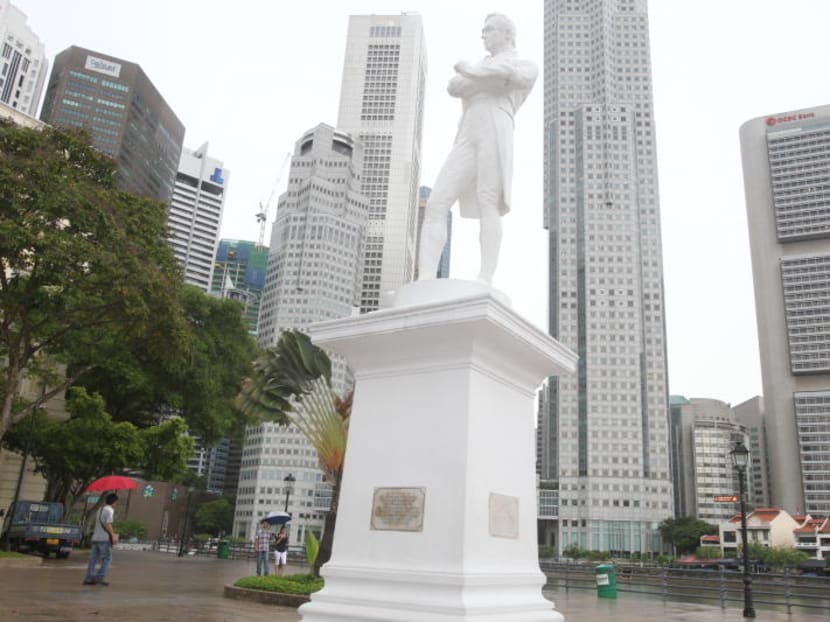S’pore to 'appropriately' commemorate its bicentennial in 2019, says PM Lee
SINGAPORE — The Republic will "appropriately" commemorate the 200th anniversary of the landing of Sir Stamford Raffles when the "important milestone" is reached in 2019, said Prime Minister Lee Hsien Loong.

The Republic will "appropriately" commemorate the 200th anniversary of the landing of Sir Stamford Raffles when the "important milestone" is reached in 2019, said Prime Minister Lee Hsien Loong. TODAY file photo
SINGAPORE — The Republic will "appropriately" commemorate the 200th anniversary of the landing of Sir Stamford Raffles when the "important milestone" is reached in 2019, said Prime Minister Lee Hsien Loong.
Noting that Singapore had marked the 150th anniversary in 1969, Mr Lee said in his New Year message on Sunday (Dec 31) that the bicentennial is an occasion for Singaporeans to "reflect on how our nation came into being, how we have come this far since, and how we can go forward together".
As Singapore approaches its bicentennial, there have been spirited public discussions about whether the occasion should be commemorated, and in what ways. Some felt that it would be inappropriate to celebrate the country's colonial past, while others believe it is an opportunity for younger Singaporeans to learn about the country's history and multicultural roots.
Mr Lee noted that while Singaporeans celebrated in 2015 the country's 50th anniversary of independence, its "complex" history stretched way back before 1965 – for at least 700 years.
He pointed out how a number of institutions here including the Singapore Malayalee Association and Khalid Mosque, as well as Nanyang Girls High School and Thong Chai Medical Institution – which was set up as a charitable clinic in 1867 – are older than Singapore as an independent country, with each contributing to the Singapore story.
"Our island was already a maritime emporium in the 14th century, though it declined in later centuries. Sir Stamford Raffles' landing in 1819 was a key turning point," said Mr Lee. "Raffles set Singapore on a different trajectory, which brought us to where we are today."
Singapore "might not have become a unique spot" in Southeast Asia had Raffles not landed here, and turned it into a "British colony, a free port, and a modern city", said Mr Lee.
Back then, migrants from China, India and other countries left their families behind to seek better lives in Singapore. Although they initially had not intended to stay here permanently, this mindset soon changed as their families were brought over or they started families here, Mr Lee said.
Having settled in Singapore, the migrants built infrastructure such as hospitals and schools, as well as religious institutions. Meanwhile, their cultures and traditions interwoven to form a "rich and diverse tapestry", said Mr Lee.
The migrants' shared experiences grew into a Singaporean identity, Mr Lee said. "As our forefathers worked to build a future for themselves and their families, they were also turning an emporium into a home, and eventually a country. Without this history, we could not have made the SG50 journey from third world to first."
He added: "Our progress was not a straight line upwards. We experienced many dislocations and disruptions, including war and peace, economic depression and prosperity, struggles as well as success. But ultimately we came through and became an independent nation."






